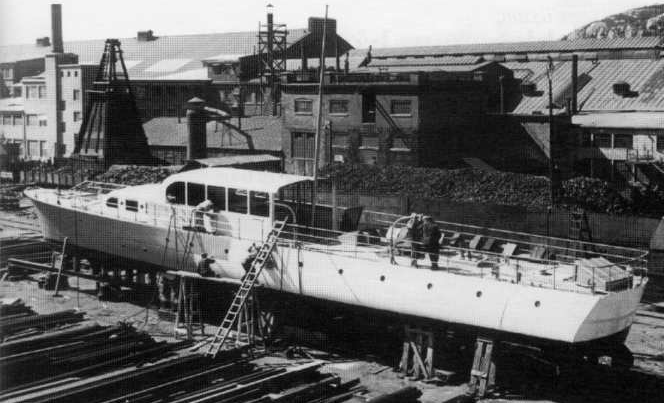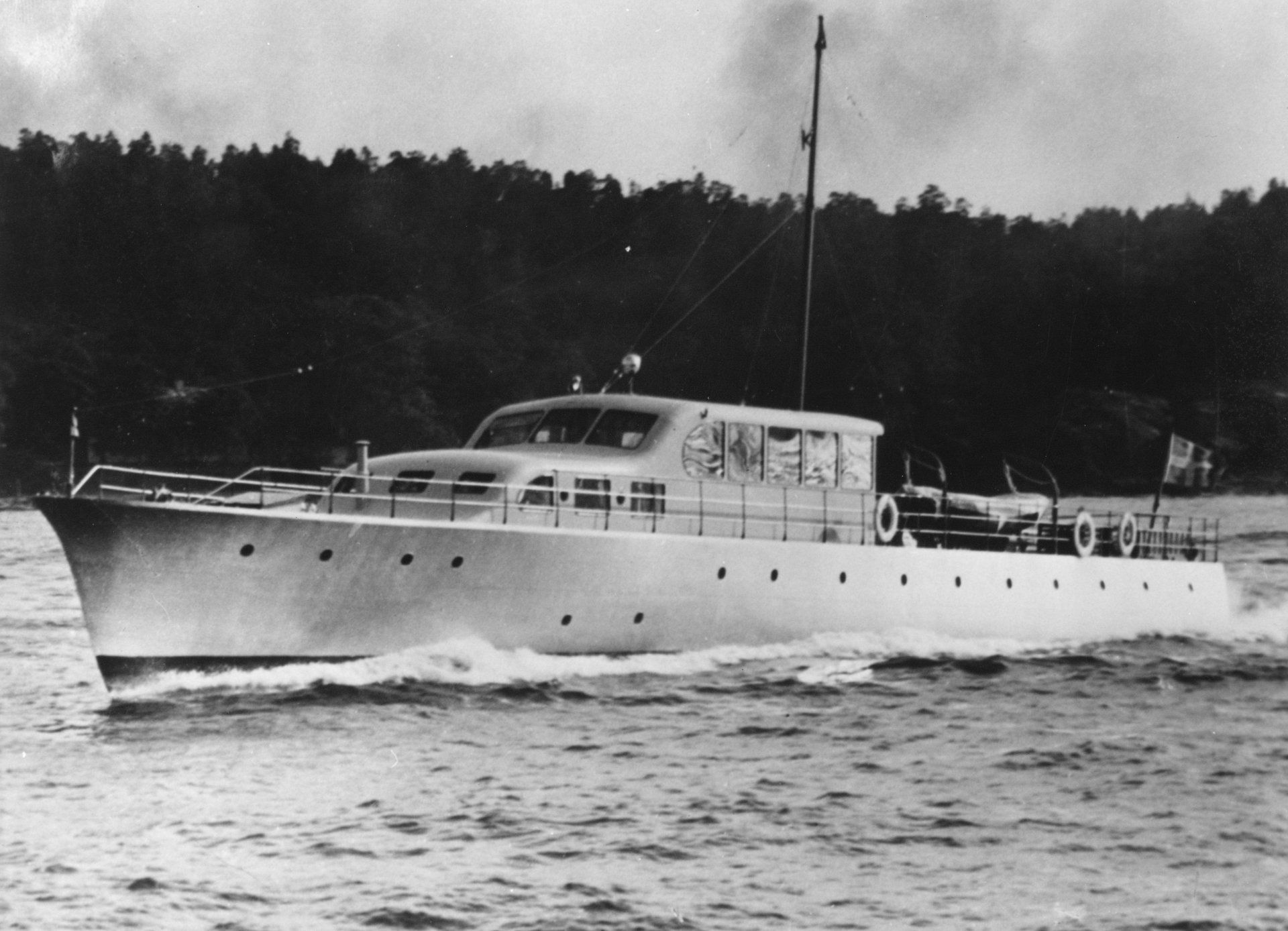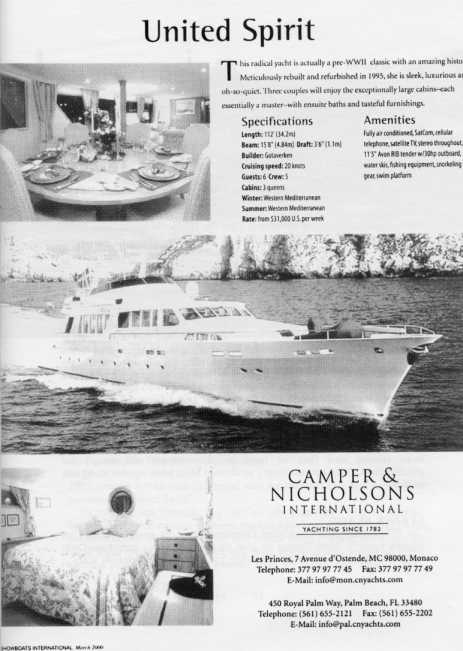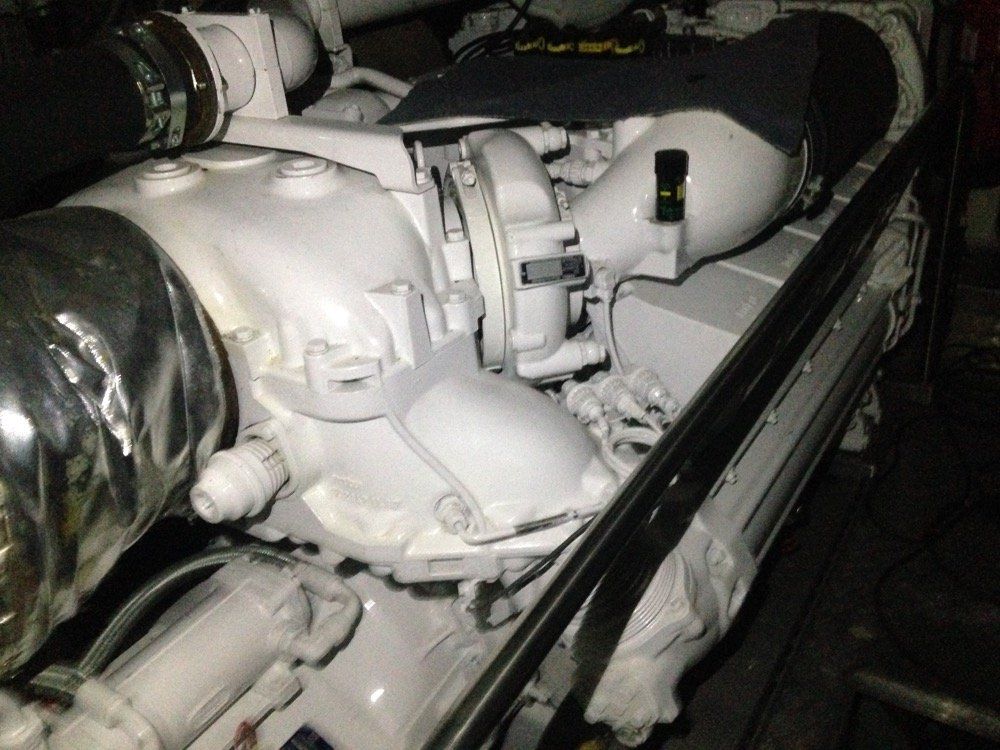History
Built in 1938 as a luxury yacht

Slide title
Built in 1938 at Götaverken for Torsten Kreuger.
Button
Slide title
Write your caption hereButton
Slide title
Write your caption hereButton
On May 27, 1939, an unusual construction was moved into the lake at Götaverken. It was Thorsten Kreuger's yacht EDI, a craft designed by Knut Ljungberg with a hull made from aircraft aluminum. Ljungberg was the head of the Hästholm shipyard where many large motor yachts were built, several of them designed by himself. The boat had not been given a conventional "new construction" number in the 500 series, but was built on order number 3010, which in Götaverkens Number and Literature List of 1939 was part of the group 3001-4000 called "Aircraft manufacturing account".
The construction work for the hull and details was carried out at Götaverken under the direction of Vilhelm Rören and Karl Gustav Gislén. The boat had the dimensions L.O.A. 31.5 m, beam 4.75 m and draft 0.93 m, with a displacement of 35,000 kg. As mentioned, the hull was built from lightweight metal, specifically German aluminum alloys. The frame from the aluminum alloy "Bondur", and consisted of Z-profiles 50x35x35. The planking was made from 4-5 mm thick BS-Scewasser, and was riveted to the frame with riveted joints. The bow and stern rail were made from sand-cast aluminum. The entire ship, but especially the hull, had the character of an experimental construction.
The machinery consisted of three engines, each connected to a propeller. The total power was about 1400 hp at 1900 rpm. The speed was estimated to be 26 knots. According to certain sources, however, the estimated speed could not be reached, as the center propeller wasn't able to run at peak efficiency due to interference from the side propellers. The spaces on board were large, and all in all had room for 14 people. The high quality interior was made by master carpenter O Hj. Wikström, Stockholm.
The hull was built in a temporary shed that had been set up at the western part of the T-channel. Construction of the hull was not without challenges; in order to shape the frames and plates, these had to be annealed. The shaping then had to take place within a certain number of hours before the metal hardened again. The launch was done with the help of a pontoon crane that lifted the hull into the T-channel.
The construction work for the hull and details was carried out at Götaverken under the direction of Vilhelm Rören and Karl Gustav Gislén. The boat had the dimensions L.O.A. 31.5 m, beam 4.75 m and draft 0.93 m, with a displacement of 35,000 kg. As mentioned, the hull was built from lightweight metal, specifically German aluminum alloys. The frame from the aluminum alloy "Bondur", and consisted of Z-profiles 50x35x35. The planking was made from 4-5 mm thick BS-Scewasser, and was riveted to the frame with riveted joints. The bow and stern rail were made from sand-cast aluminum. The entire ship, but especially the hull, had the character of an experimental construction.
The machinery consisted of three engines, each connected to a propeller. The total power was about 1400 hp at 1900 rpm. The speed was estimated to be 26 knots. According to certain sources, however, the estimated speed could not be reached, as the center propeller wasn't able to run at peak efficiency due to interference from the side propellers. The spaces on board were large, and all in all had room for 14 people. The high quality interior was made by master carpenter O Hj. Wikström, Stockholm.
The hull was built in a temporary shed that had been set up at the western part of the T-channel. Construction of the hull was not without challenges; in order to shape the frames and plates, these had to be annealed. The shaping then had to take place within a certain number of hours before the metal hardened again. The launch was done with the help of a pontoon crane that lifted the hull into the T-channel.
Rebuilt into a yacht in the 1990s
and completely renovated in 2004/2020
Technical information
Renovated: 1990, 1998, 2004 and 2020
Length: 34.20 m
Width: 4.84 m
Depth: 1.10 m
Displacement: 74000 kg
Hull Material: Aluminum/Sandwich composite
Deck Material: Aluminum/Sandwich composite and teak
Location: Trosa, Sweden
Saloons:
1
Cabins: 5 guest + 1 crew
Berths: 10 + 2 crew
Toilets: 5
Showers: 5
Generator: 2 x Fisher Panda, 35 kW each
Cabins: 5 guest + 1 crew
Berths: 10 + 2 crew
Toilets: 5
Showers: 5
Generator: 2 x Fisher Panda, 35 kW each
Engine Model:
MTU M20-10 (new since 2004) - A Rolls-Royce Solution
Engine Power:
2 x 1360 hp (currently throttled to 1000 hp each)
Engine Hours:
238 h (July 2020)
Fuel Type:
Diesel
Cruising Speed: 26 knots
Max Speed: 31 knots (at 1360 hp)
Cruising Speed: 26 knots
Max Speed: 31 knots (at 1360 hp)
The yacht was built at the Swedish shipyard Götaverken, and was designed by Knut Ljungberg. The hull is made from aluminum and has been fitted with a special class-approved surface covering, a sandwich-structured composite, to achieve as smooth sailing as possible.
Inside, the ship has beautiful American white oak panelling with ebony inlays, soft carpets, beautiful furniture and warm lighting - all to make the on-board stay as comfortable as possible. The United Spirit has three tastefully decorated and thoughtfully planned suites, each with fitted wardrobes and en-suite bathrooms. There is also an additional cabin with a bunk bed and, of course, a crew cabin with an en-suite bathroom and shower.
The ship is now equipped with satellite communications and the latest in navigation technology and safety equipment. On deck, there is plenty of space for sunbathing and relaxing.
The United Spirit is a powerful ship that possesses a unique blend of quality, style and comfort, giving everyone on board a safe and memorable stay.
The United Spirit was the world's fastest yacht in the 1990s and is still one of the world's three fastest, meaning that you can travel more than twice as far in one hour compared to a traditional yacht.
Interior & Layout:
• Aft cabin with bunk bed
• Stern suite "Odin" with double bed
• Midships suite "Idun" with double bed
• Suite "Tor" with double bed
• Bow cabin with 2 single beds + 1 double bed
Galley:
• Combined conventional/microwave oven
• Stove
• Refrigerator
• Freezer
• Dishwasher
Nautical Instruments:
• New Windows-based chartplotter
• Autopilot Simrad AP50
• Sonar Furuno FCV-663
• Magnet compass Furuno DGPS
• Radar Furuno FR-8030 and FR-1510
• VHF SHIPMATE RS 8100 / Sailor GMDSS, SART, Epirb
• Satellite phone
Technical Equipment:
• Waterjets KaMeWa 45 S62 / 6
Bow thruster: Lewmar Swing 400 S, 35 hp
Dinghy: Avon SuperSport with Yamaha 40 hp
• Sonar Furuno FCV-663
• Magnet compass Furuno DGPS
• Radar Furuno FR-8030 and FR-1510
• VHF SHIPMATE RS 8100 / Sailor GMDSS, SART, Epirb
• Satellite phone
Technical Equipment:
• Waterjets KaMeWa 45 S62 / 6
Bow thruster: Lewmar Swing 400 S, 35 hp
Dinghy: Avon SuperSport with Yamaha 40 hp




